 Minerva SystemsDr. Cora Angier Sowa |
CORA SOWA'S RIGHT-OF-WAY:RAILROAD (AND ENGINEERING) HISTORY OF CORA ANGIER SOWAPage 6Engineers in the Family, Part IIPhilip Powell Angier, civil engineer |
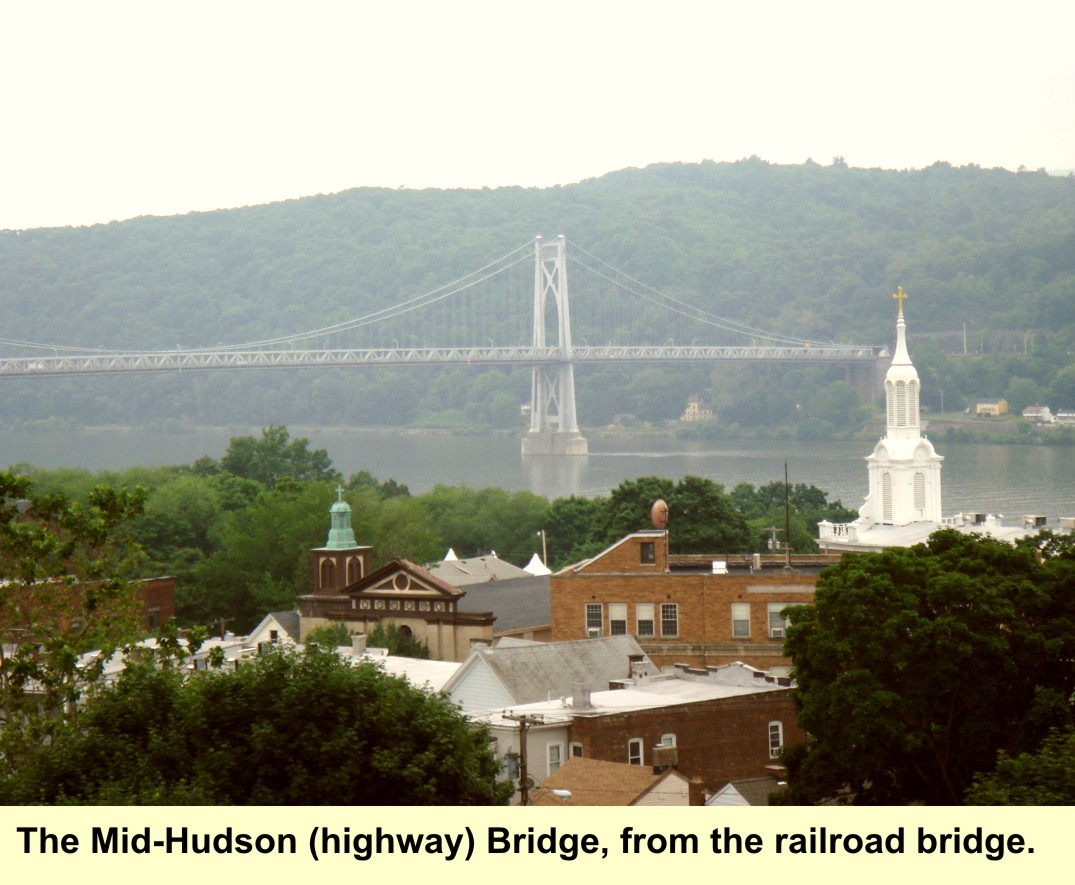
The Mid-Hudson (highway) bridge, at Poughkeepsie, New York. Philip Angier (my uncle, son of Walter Angier and brother of my father Robert Angier) was the engineer in charge of its construction. Walter Angier, though semi-retired, may have had a hand in the design of its substructure, too.
To return to the Minerva Systems home page, click here.
To return to the first page of Cora Sowa's Right-of-Way, click here.You can also contact me at casowa@aol.com.
Contents:
- On the previous page:
- Walter Eugene Angier, civil engineer.
- Engineering life of Walter Angier
- Obituary published by American Society of Civil Engineers, 1928
- Article on Walter Angier in the Illinois Central Magazine, 1964
- Listing of office in the Monadnock Building, Chicago
- The bridge at Thebes, Illinois, 1902
- The bridges at Memphis, Tennessee, 1892 and 1916
- The unbuilt bridge at Baton Rouge, Louisiana, 1914
- Building a bridge on the Alaska Railroad, 1920
- The bridges at Poughkeepsie, New York, 1912 (rebuilding) and 1930 (begun in 1923)
- On this page:
- On the following page:
- Alexander Lodyguine, Russian (and American) engineer and inventor.
Philip Powell Angier, son of Walter Eugene Angier (uncle of Dr. Cora Angier Sowa)
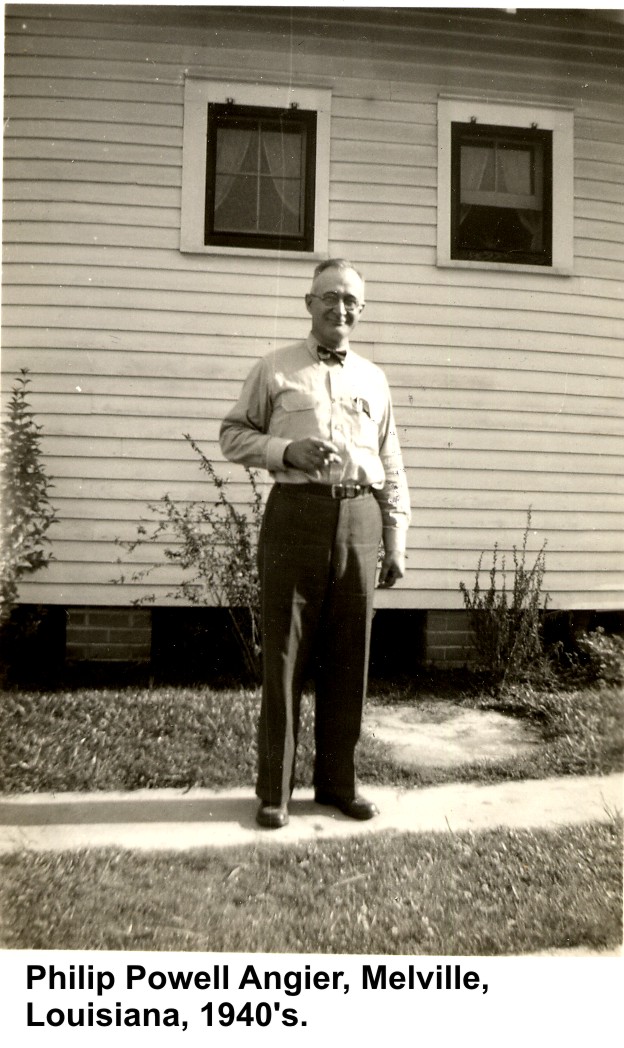
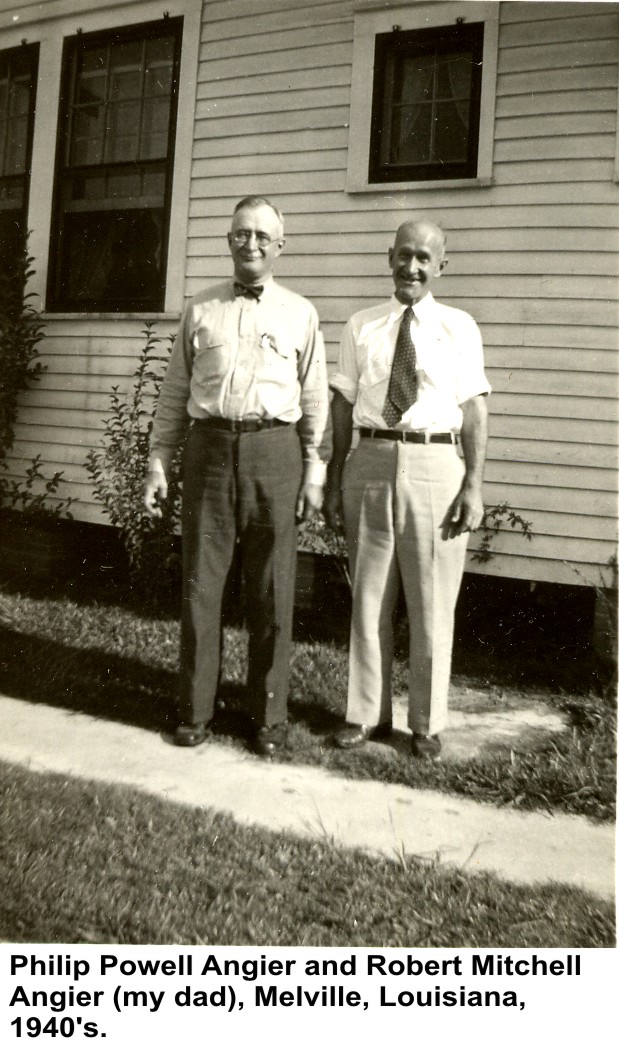
Engineering career of Philip Angier
My uncle, Philip Powell Angier ("Uncle Powell"), like his father, Walter Angier, was a civil engineer specializing in the design of bridges. He finally settled in Louisiana, where, among many other bridge projects, he was supervisory engineer of the first bridge over the Mississippi at Baton Rouge (completing a project once envisioned by his father), he was senior engineer on an early bridge over the Red River at Alexandria, and was the principal engineer on the bridge over the Calcasieu River at Lake Charles. As a kid in 1948, I visited with Uncle Powell and Aunt Annie at Lake Charles.
In the northeast, Philip Angier was in resident engineer during the building of the Mid-Hudson (highway) Bridge, which was begun in the 1920's and opened in 1930. Walter Angier, too, may have contributed to the design of the substructure of that bridge, but by then was semi-retired, and the firm was now called "Modjeski and Moran." Philip Angier tried to get his father to supervise construction while he was in Paris on an American Legion trip with fellow veterans of World War I, but Walter apparently declined (as described in Estelle Angier's letter, quoted above).
Immediately below, on the left, a clipping is reproduced that announces Philip Angier's trip to Paris. On the right, another clipping describes a speech he made in 1926 explaining the construction of the Mid-Hudson bridge. Right below these, other clippings from the Louisiana Highway Department describe his career designing bridges for the State of Louisiana and his eventual retirement. Sections follow containing pictures of individual bridges. All of the clippings in this section are from Xeroxed copies or originals sent to me by Estelle Angier.
Modern photos of the Mid-Hudson Bridge, with more discussion, can be found at the bottom of this page.
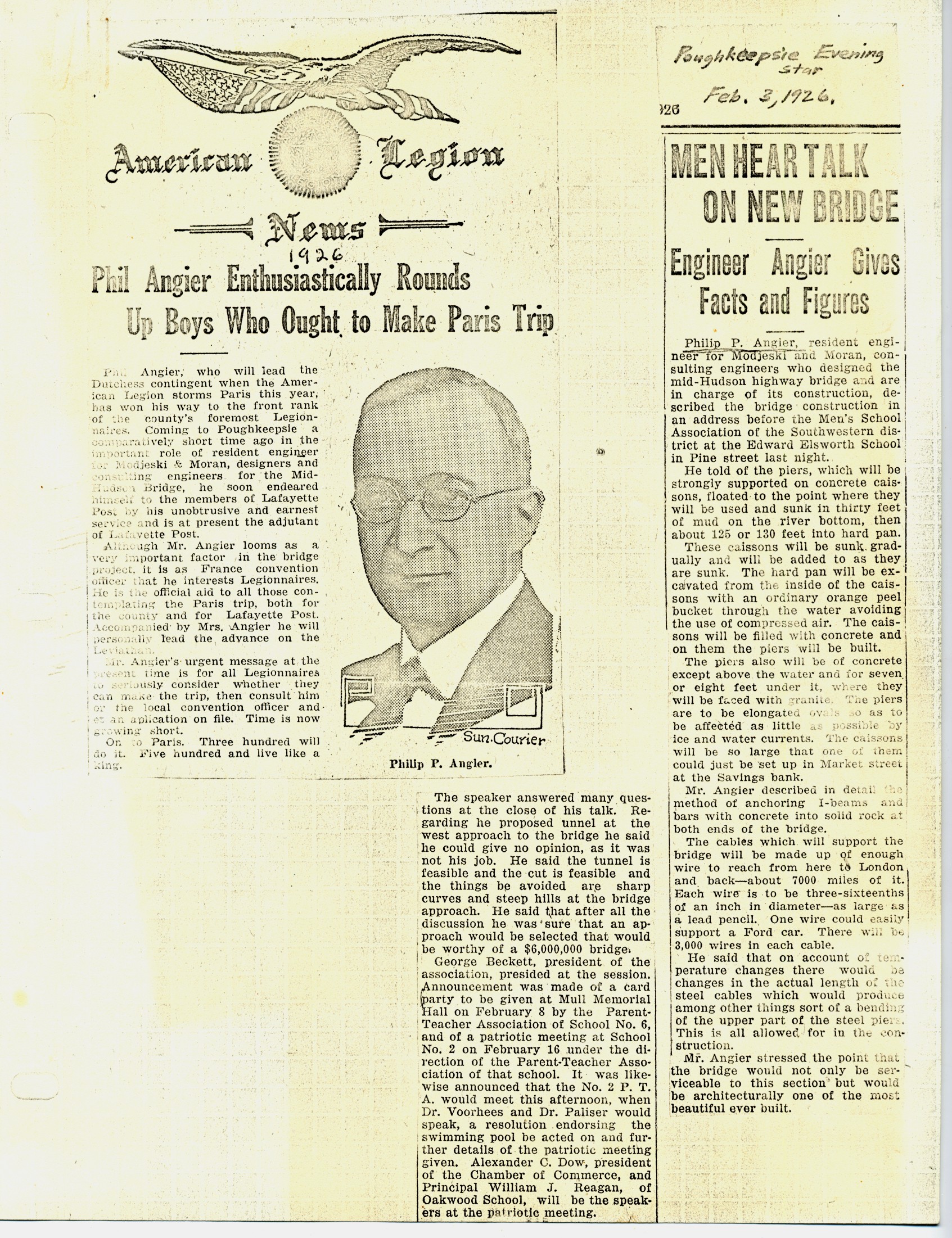
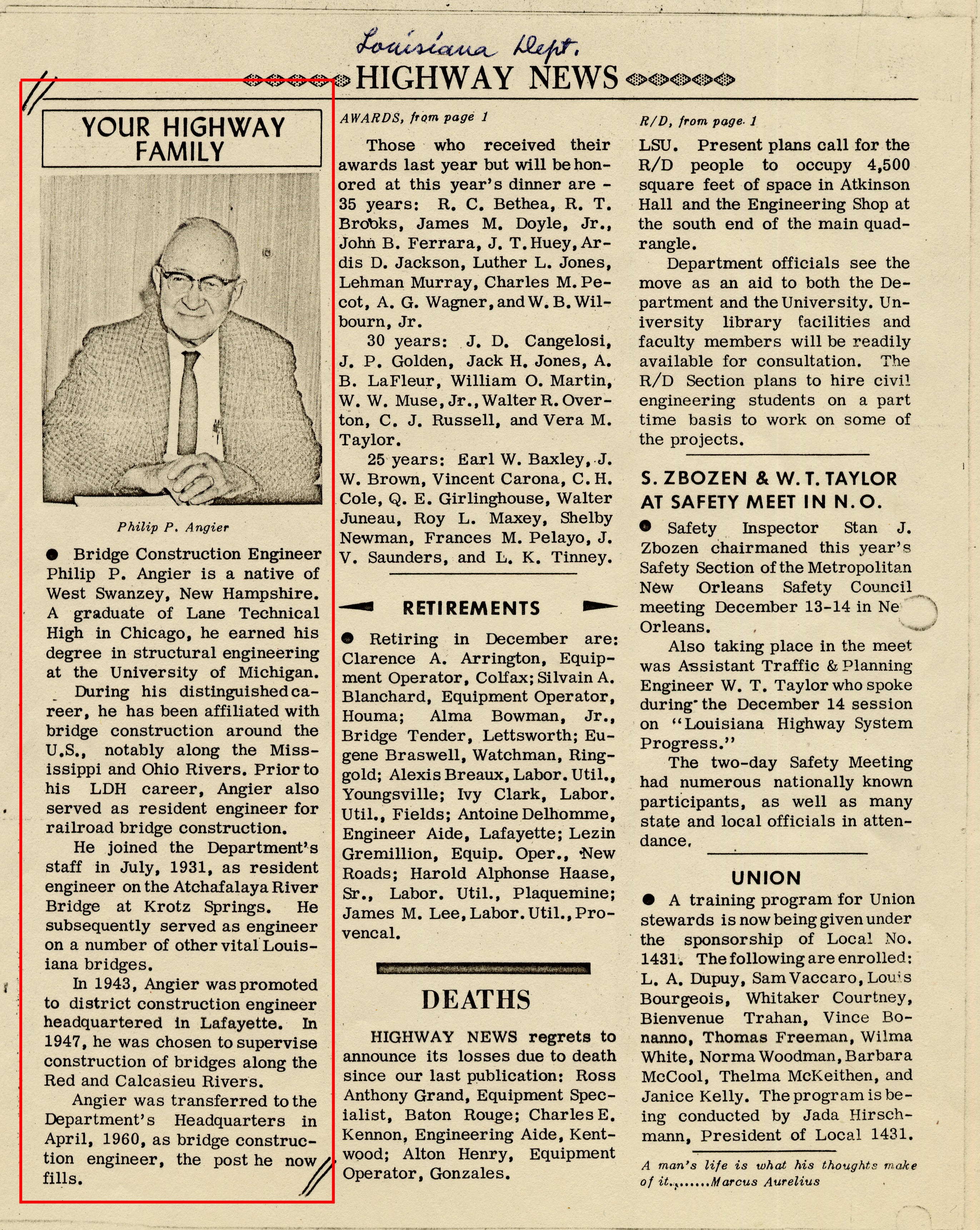
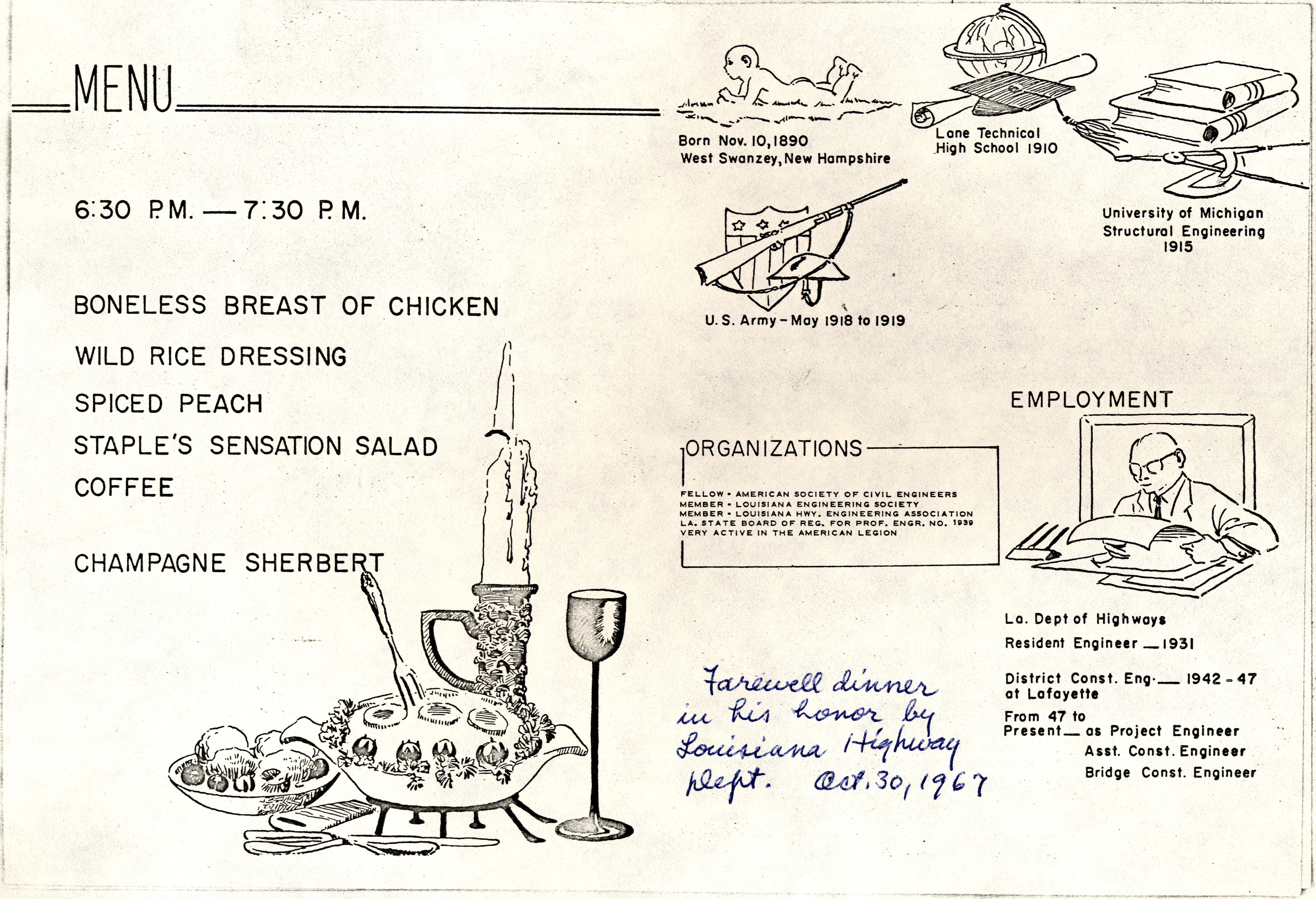
THE BRIDGE AT BATON ROUGE
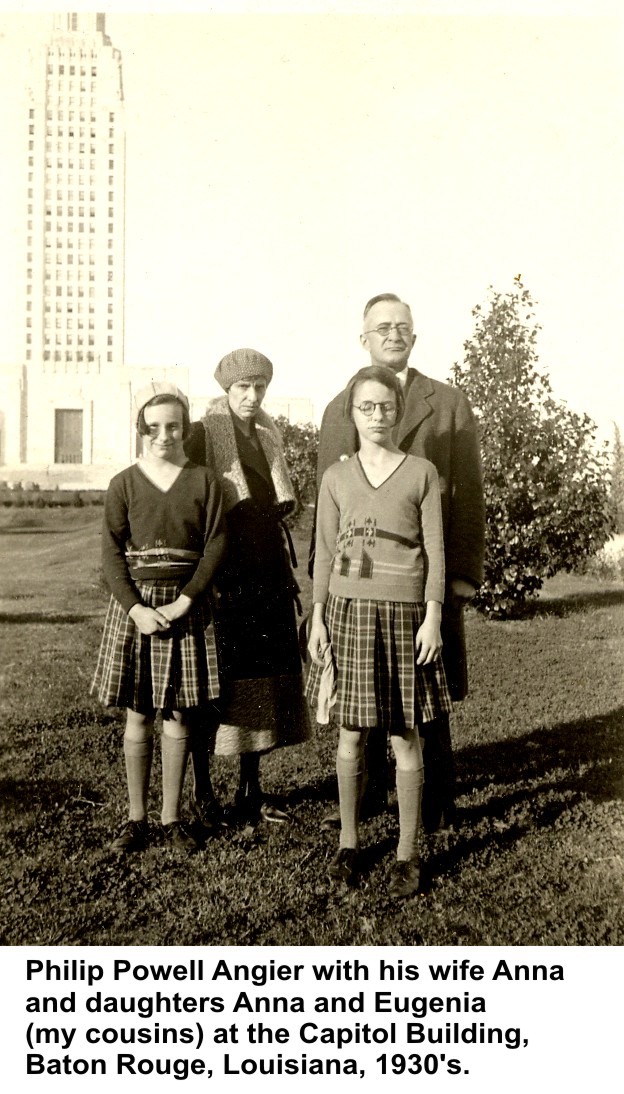
Completing his father's mission
Two steel cantilever bridges cross the Mississippi at Baton Rouge, Louisiana. The "Huey Long" (also called the "Old Bridge"), carrying U.S. 190 and one rail line, was completed in 1940. (It is not to be confused with the other "Huey Long" Bridge of 1935 at New Orleans.) The second, the "Horace Wilkinson" (the "New Bridge"), carrying Interstate 10, opened in 1968. Philip Angier worked on the design of both bridges, and the earlier bridge could be said to have fulfilled the design of his father's earlier unbuilt bridge.
Immediately below is a reproduction in the Baton Rouge State-Times—Morning Advocate of Walter Angier's original blueprint, published at the time of the building of Philip's bridge, followed by more newspaper clippings illustrating the building of the latter bridge. The caption under the blueprint reads:
THIS BLUE PRINT OF A BRIDGE, to span the Mississippi — for train traffic only — represents one of the earlier efforts to span the Father of Waters here at Baton Rouge. The bridge design was prepared by Ralph Modjeski and W.A. Angier [sic! the initials are "W.E."!] for the Baton Rouge Bridge and Terminal company in 1914. The bridge was to be about the same length as the one that has been built but it did not provide for auto — or horse — traffic. It is a coincidence the Angier's son worked on the present bridge.A closeup of the detailed plan for the pier is shown below, under the main blueprint, so the reader can better see the head-on pictures of two trains (or is it a streetcar and a train?) crossing the bridge. Below these are clippings tracking the progress of constructing the bridge. All of these clippings were sent to me by Estelle Angier.
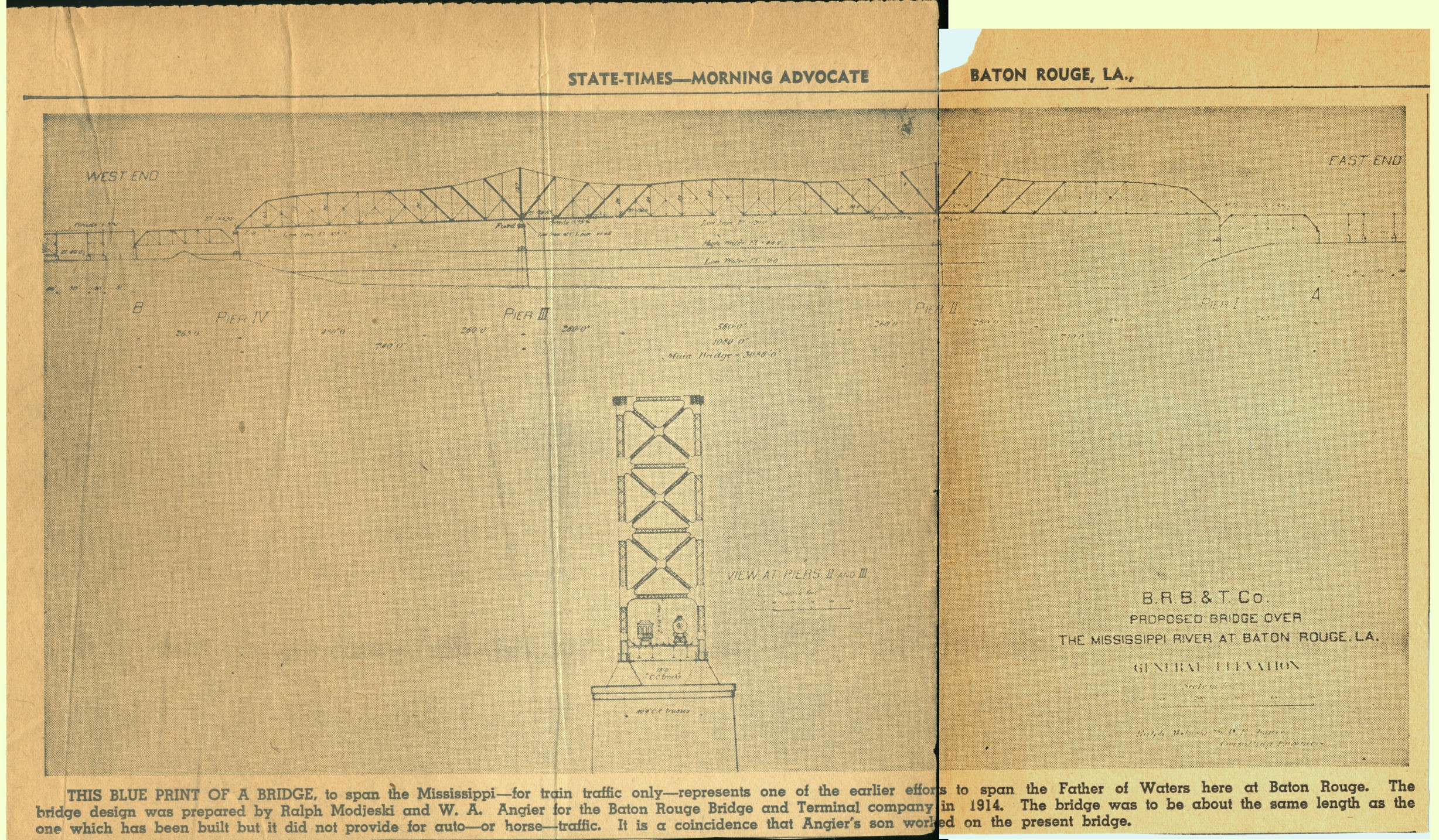

Pictures of the bridge as built
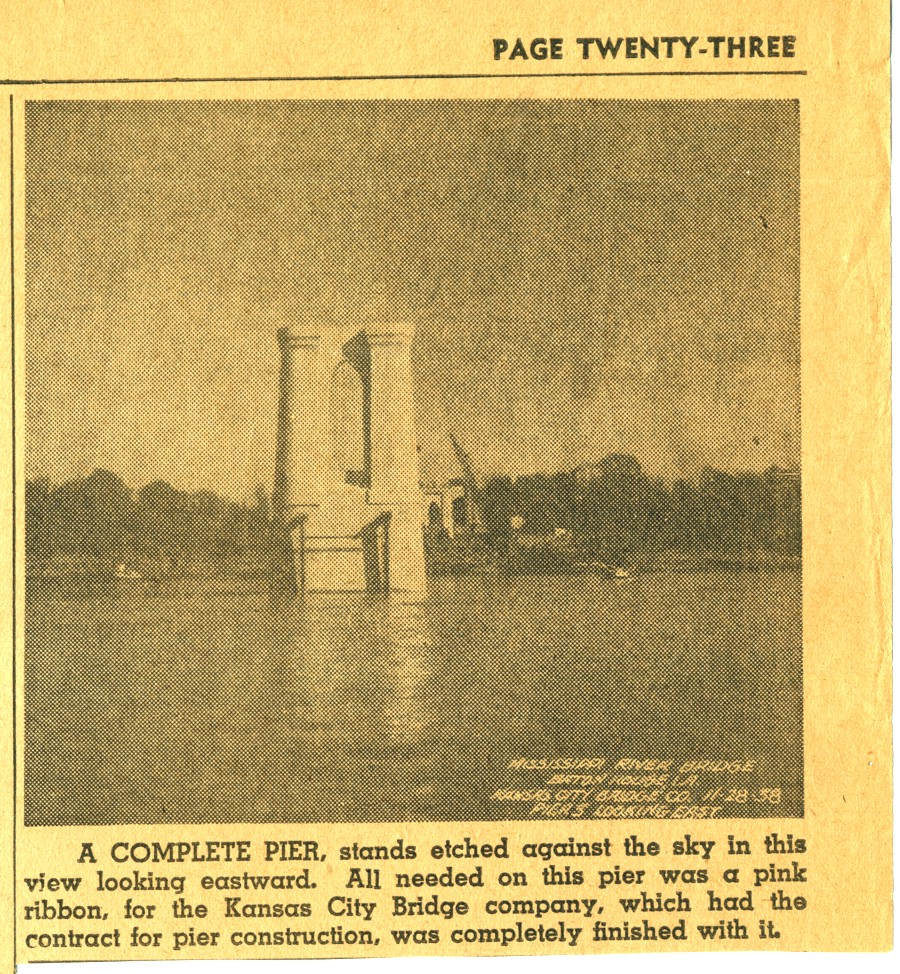
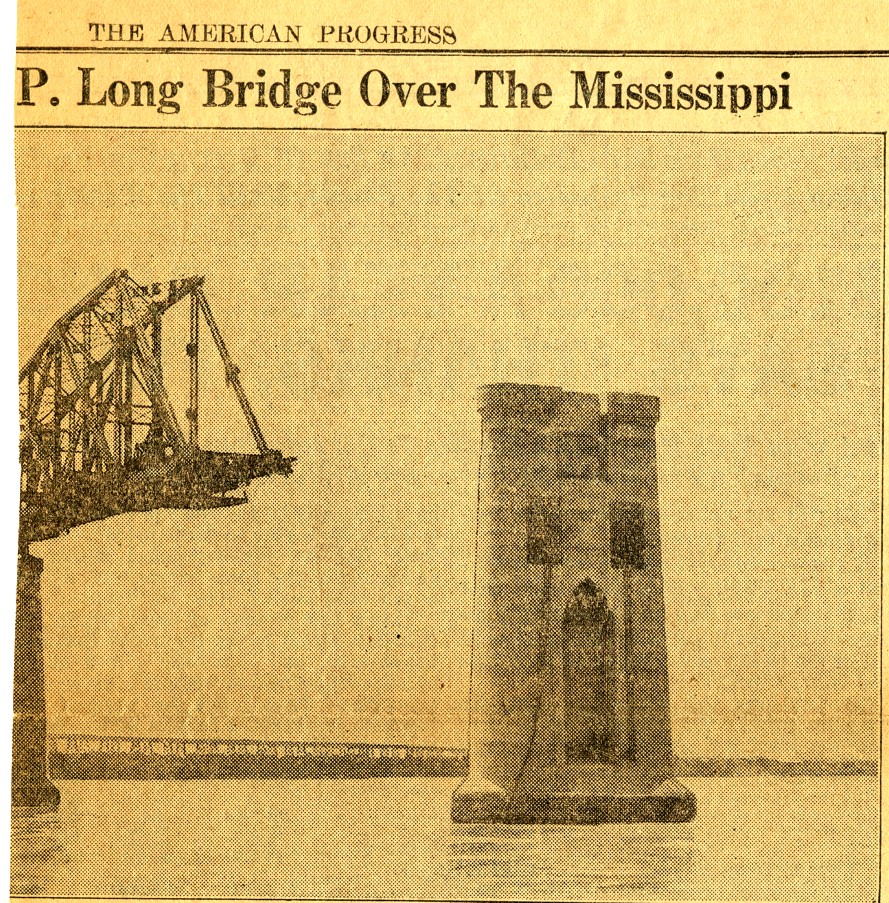
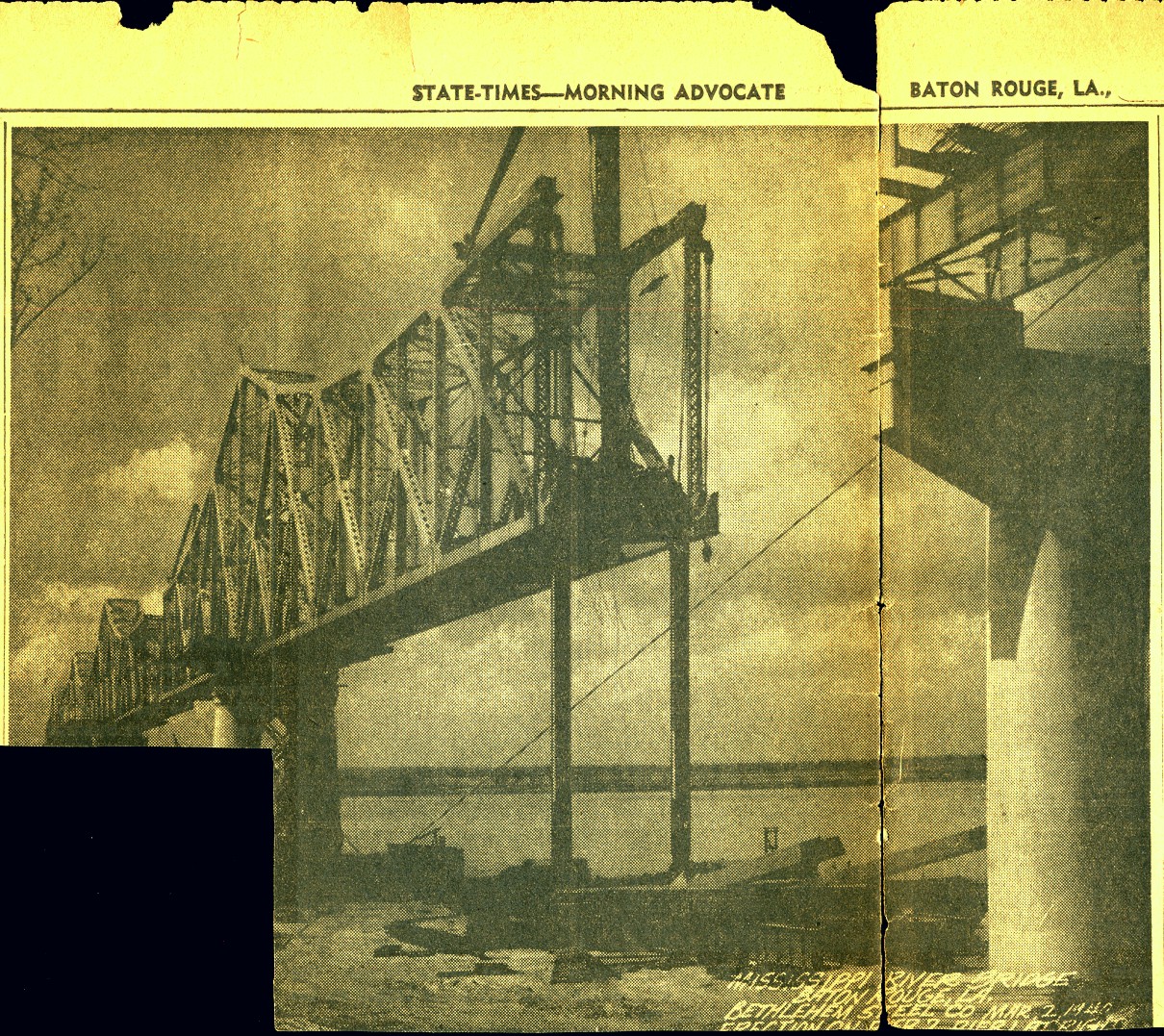
THE BRIDGE AT LAKE CHARLES, LOUISIANA
In 1952, the Calcasieu-Lake Charles highway bridge across the Calcasieu River in Louisiana opened. Philip Powell Angier was project engineer on this bridge, and my father and I visited Uncle Powell and Aunt Annie at Lake Charles when he was working on the bridge. My own principal remembrance of the visit was a trip on the Spanish moss-draped bayou in a little boat with an outboard motor. I was particularly impressed with the warning that the waters were infested with poisonous water mocassins, and I kept my hands carefully inside the boat. Below are some old clippings describing the completion of the bridge, followed by a couple of photos from the bayou trip.
At one time, the state considered naming the structure the Jean Lafitte Bridge, and replicas of Lafitte's duelling pistols are worked into the design of the railings (as described in the second clipping reproduced below). The bridge still carries Interstate 10 across the Calcasieu river, but is supplemented today by the more modern Interstate 210 Calcasieu River High Bridge (1962).
Immediately below are newspaper clippings describing the construction of the bridge, from Xeroxed copies supplied by Estelle Angier. With pride, the first clipping says "During the entire construction of this immense superstructure, and despite the hazards of the project, not one workman lost his life." Below the newpaper accounts are photos from my own visits with my father to our relatives in Louisiana.
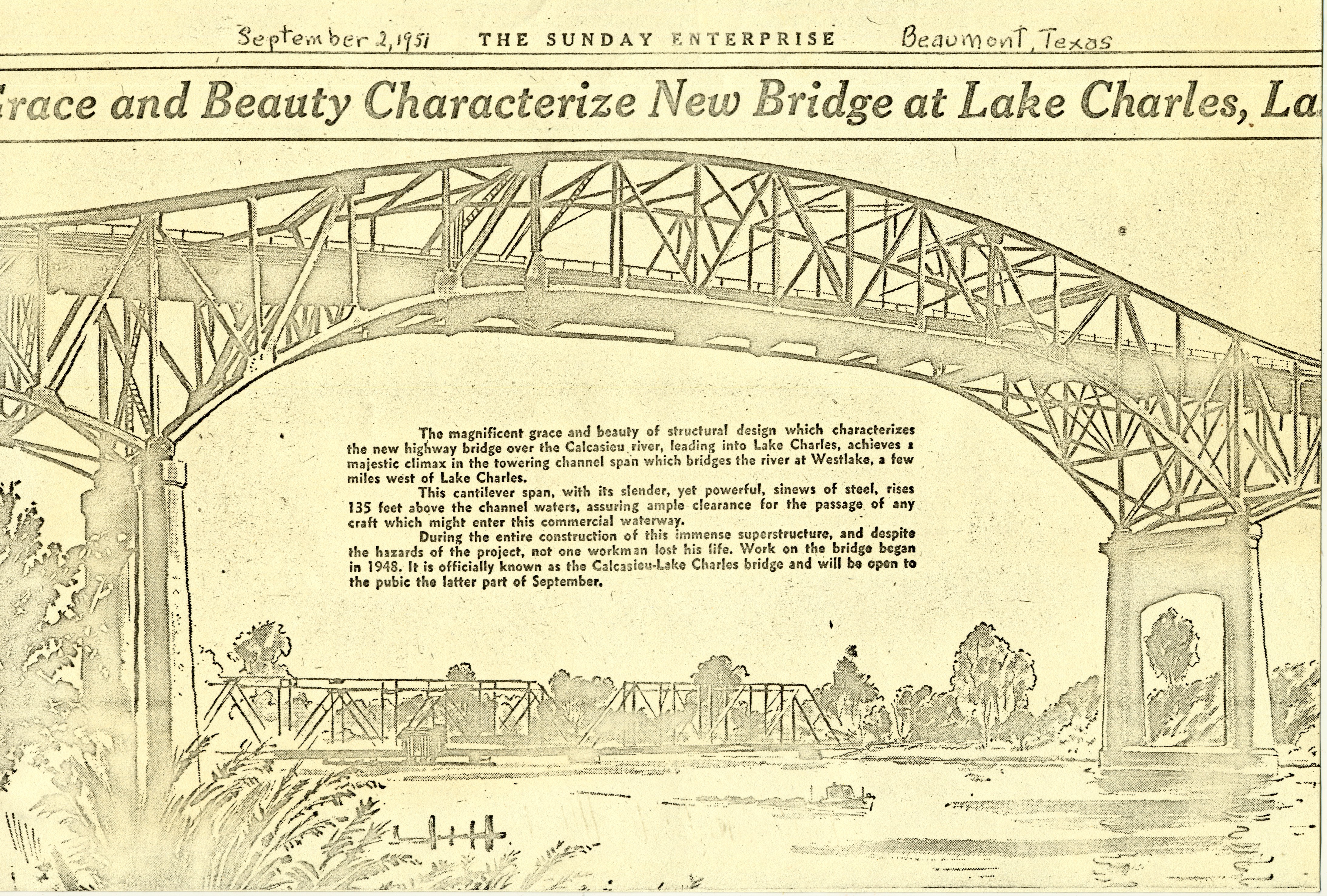
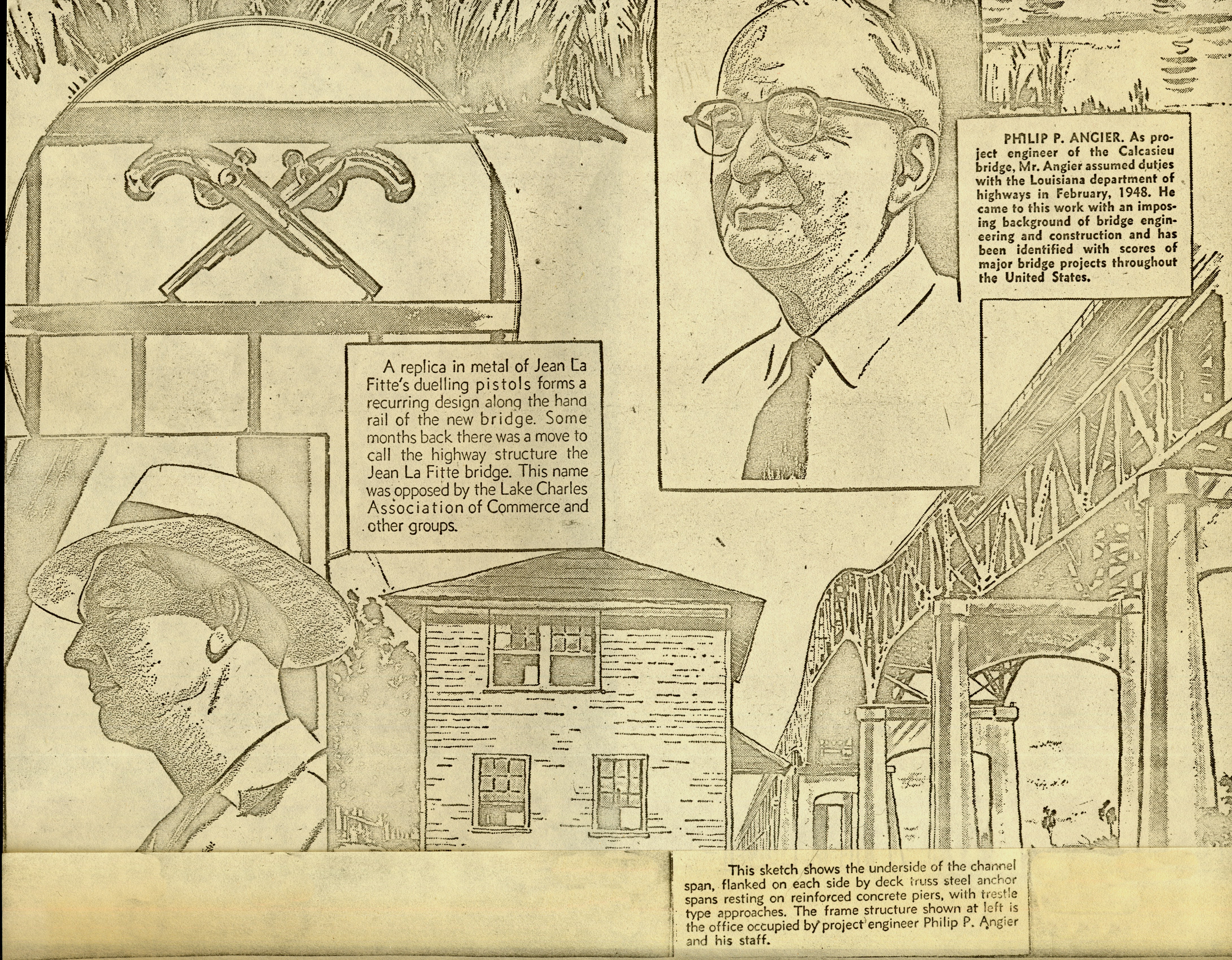
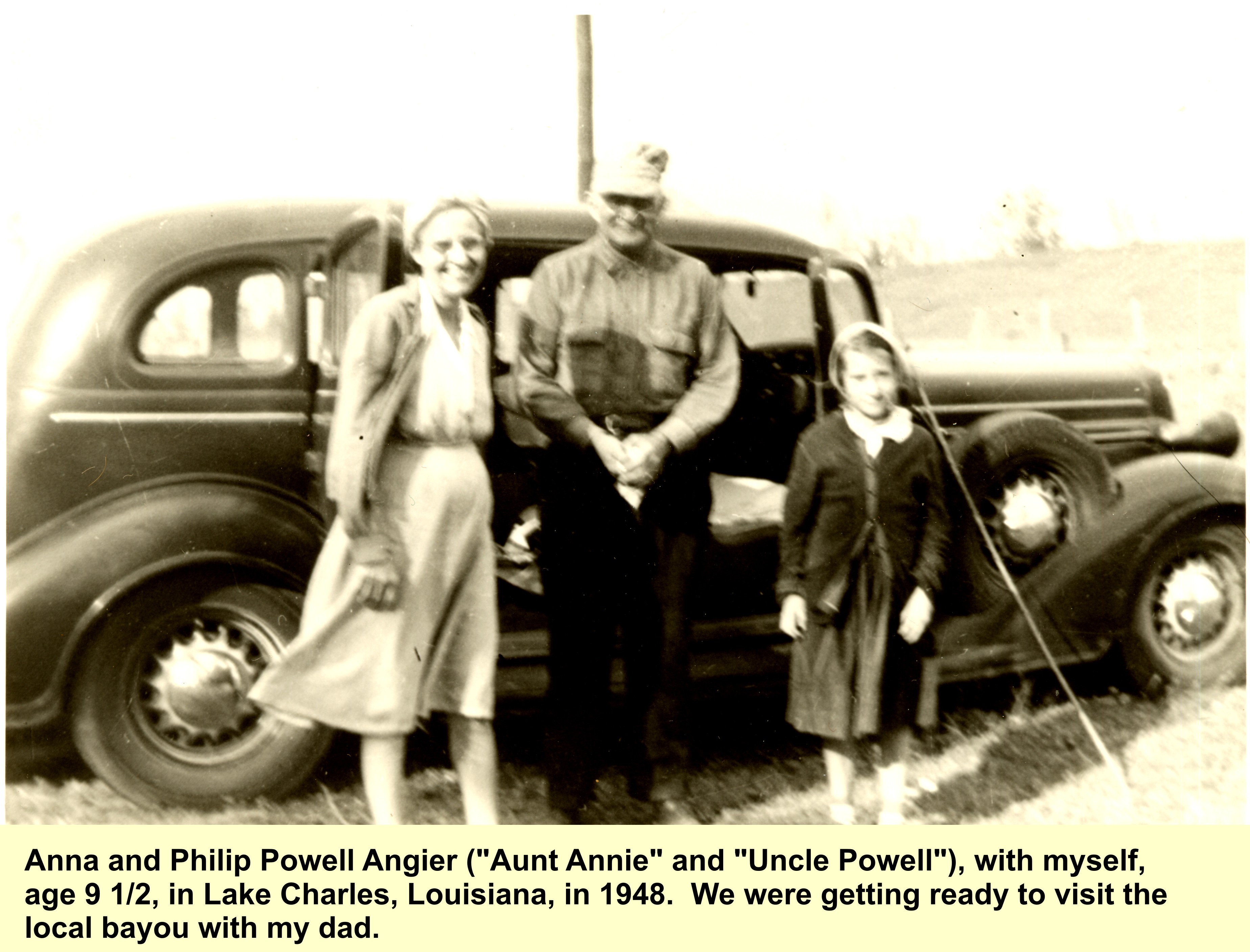
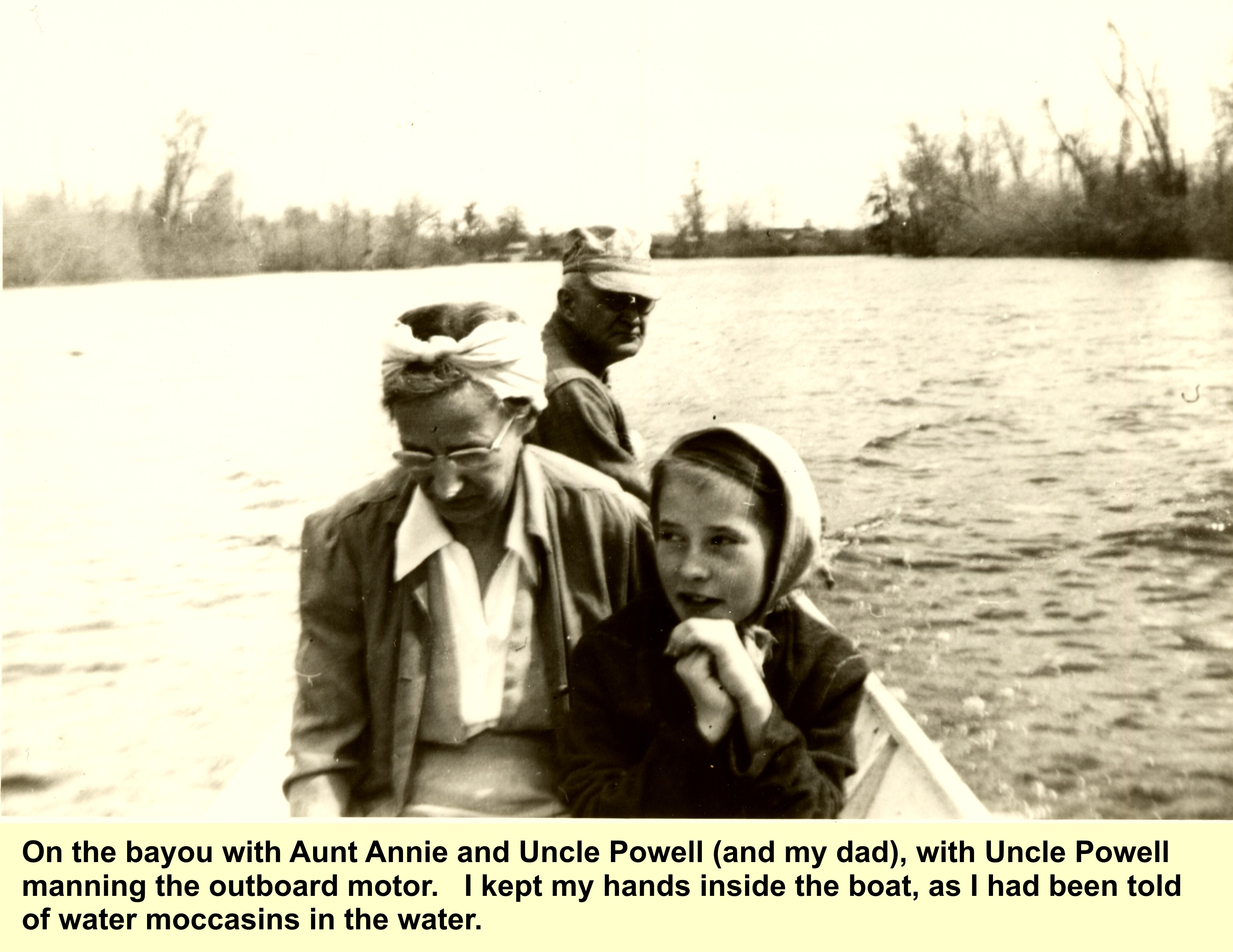
A few years later, my father and I were again in Louisiana (this time in Shreveport), and took the pictures below.
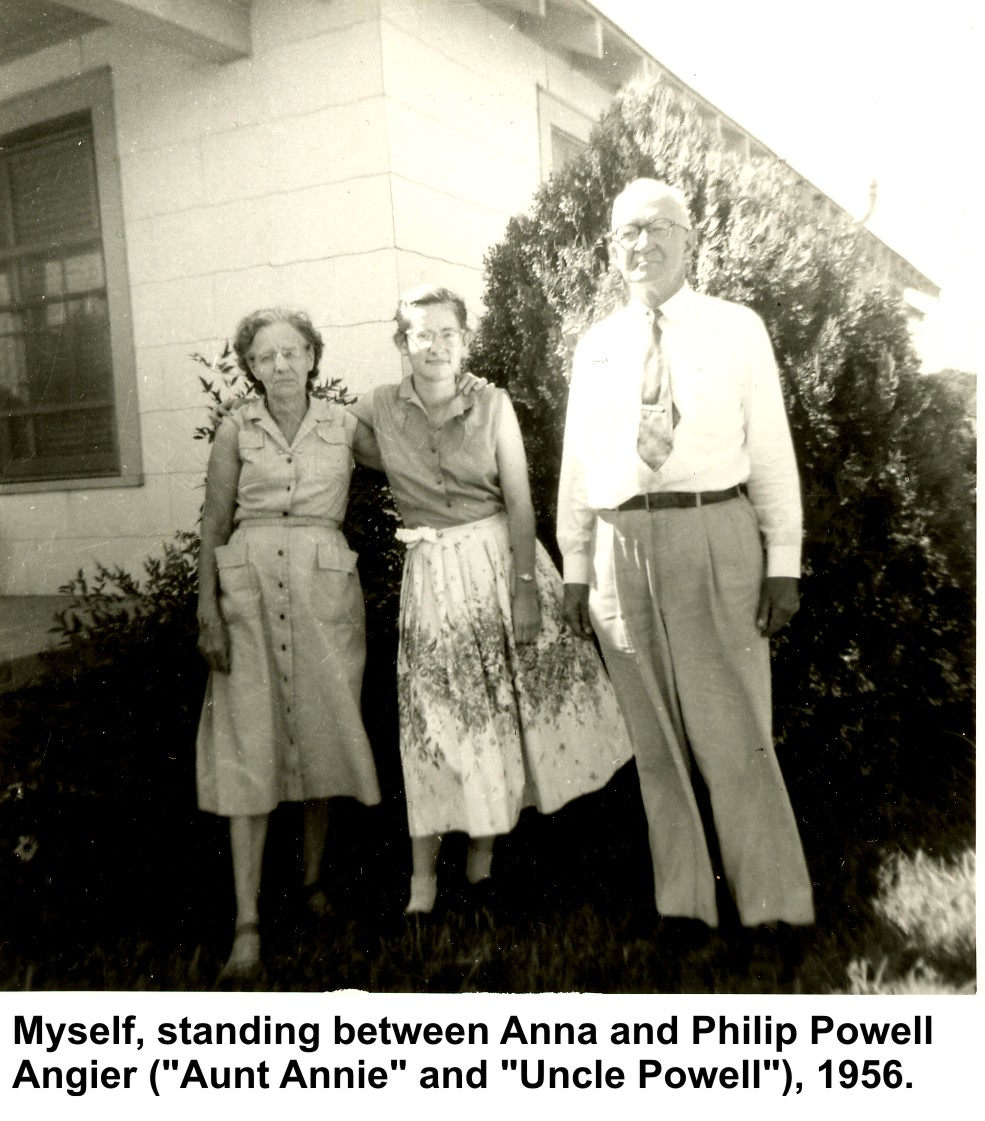
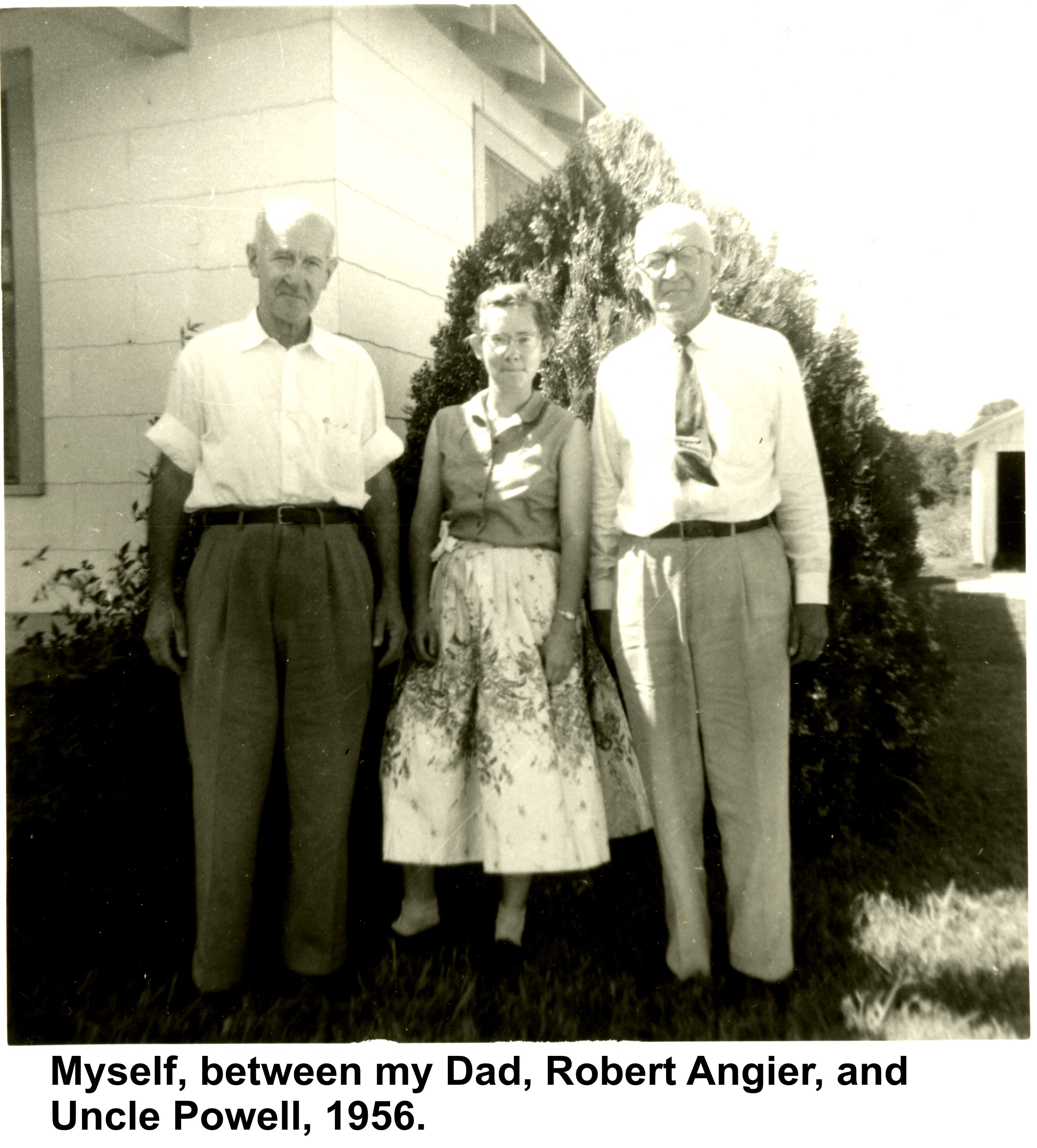
THE BRIDGE AT ALEXANDRIA, LOUISIANA
Below is a Xeroxed clipping sent to me by Estelle Angier describing preliminary plans for a four-lane vertical-lift bridge to be built across the Red River from Alexandria to Pineville, Louisiana, at Fulton Street, with Philip Angier as senior engineer (the name is erroneously given as "P.M. Angier"; the correct name is "P.P."). The bridge was constructed in the 1960's, but has since been demolished for a newer bridge. A picture on the site "Bridgehunter.com, Historic Bridges of the U.S." shows the piers of the old Fulton Street Bridge reused to support the new bridge. Both Walter and Philip Angier, father and son, were always adept at solving tricky problems of substructure construction, so no wonder!
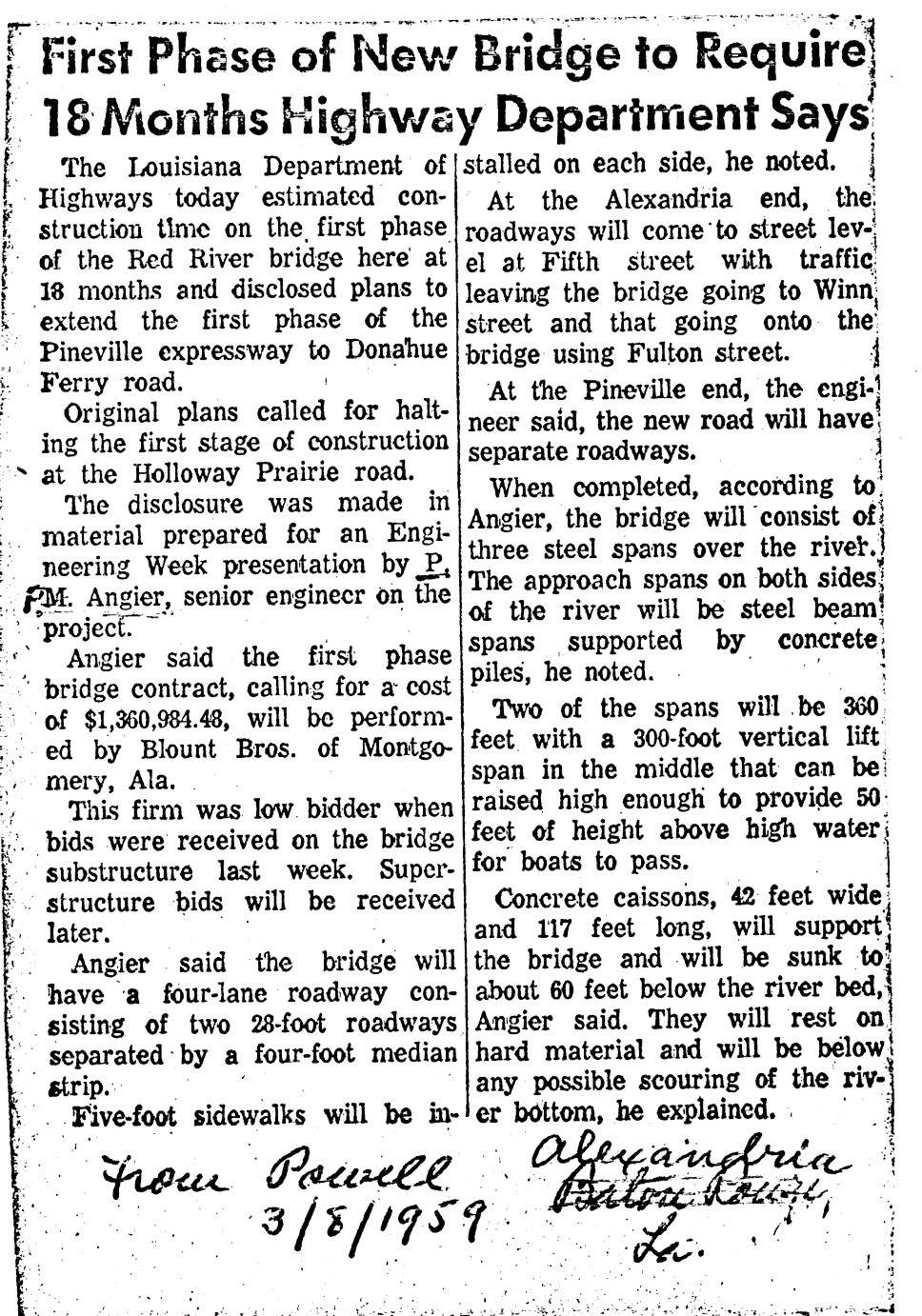
THE MID-HUDSON BRIDGE, POUGHKEEPSIE, NEW YORK
The Mid-Hudson highway bridge at Poughkeepsie was completed in 1930. It is open to both automobiles and pedestrians. It is a suspension bridge, which carries U.S.44 and New York 55 across the Hudson between Poughkeepsie and Highland. Philip Angier was resident engineer during construction of this bridge, as described above. Walter Angier had worked on the strengthening of the Poughkeepsie railroad bridge, and very likely did preliminary work on the Mid-Hudson as well.
Below are some photos of the Mid-Hudson Bridge as it looks today. More pictures of the Mid-Hudson can be found in the section devoted to the Poughkeepsie railroad bridge, on another page of this Web site.
Although the clipping from the 1926 Poughkeepsie Evening Star shown above names Philip Angier as resident engineer on the Mid-Hudson, his name does not appear on the 1930 dedicatory plaque (below); "C.W. Hanson" is named as resident engineer. Philip must have left Modjeski's employ by then. A closeup of the west pier of the bridge (bottom of the photos below) shows its structure, which was described in the Evening Star item.
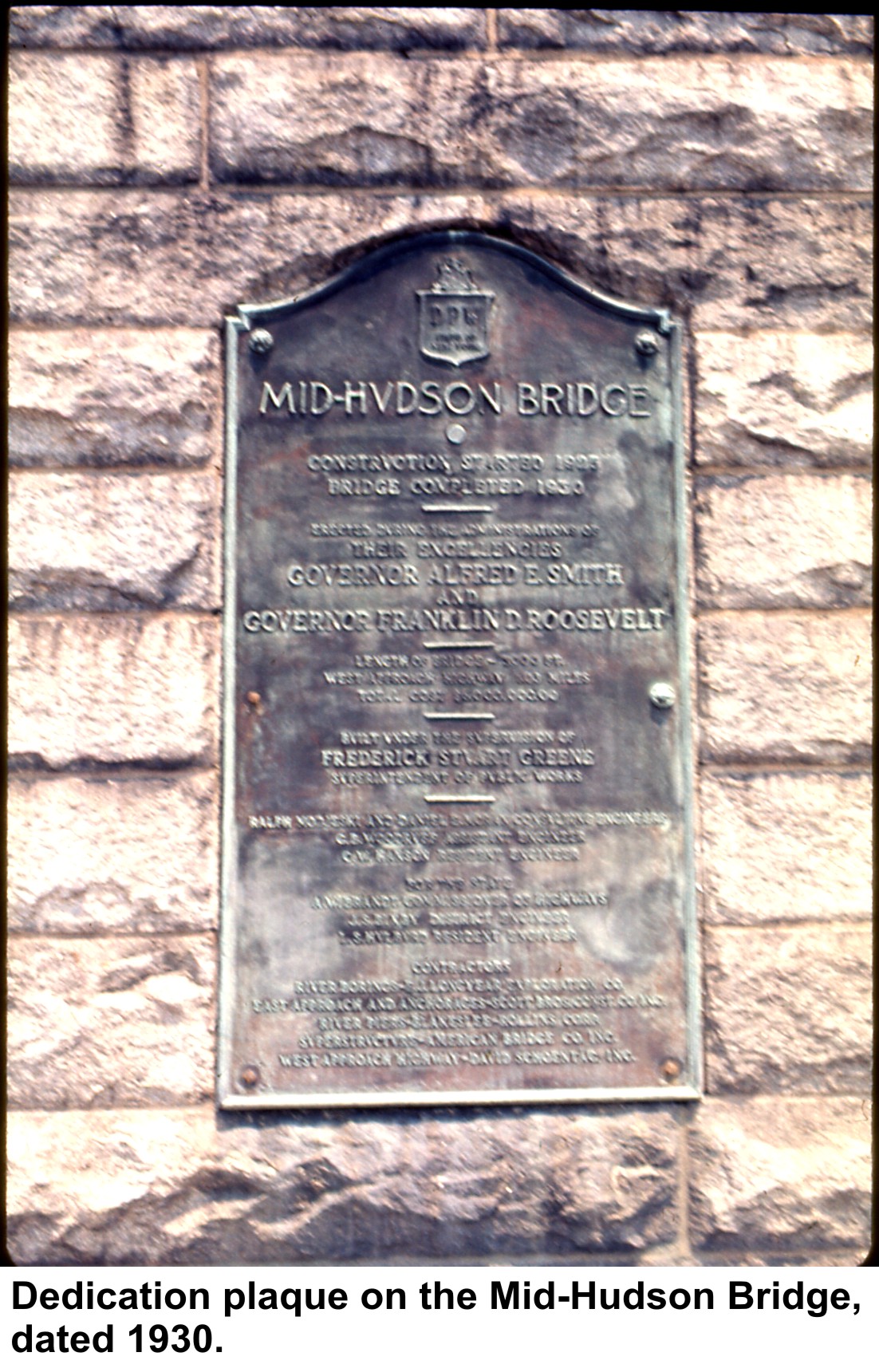
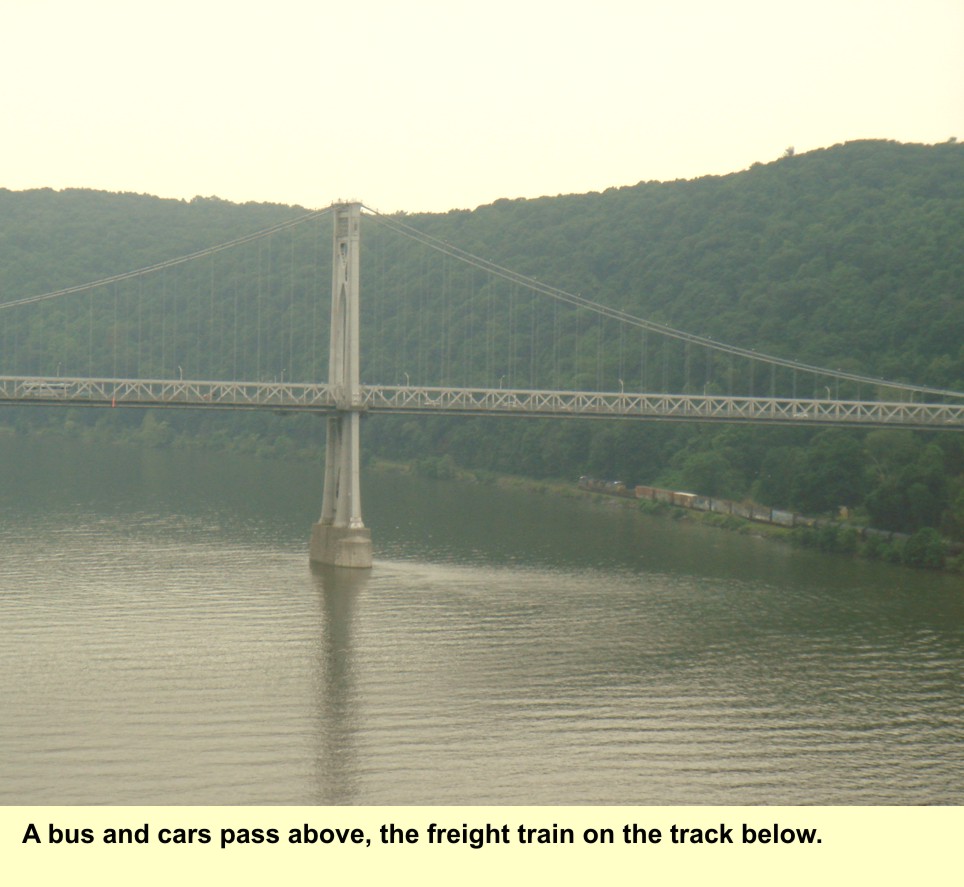
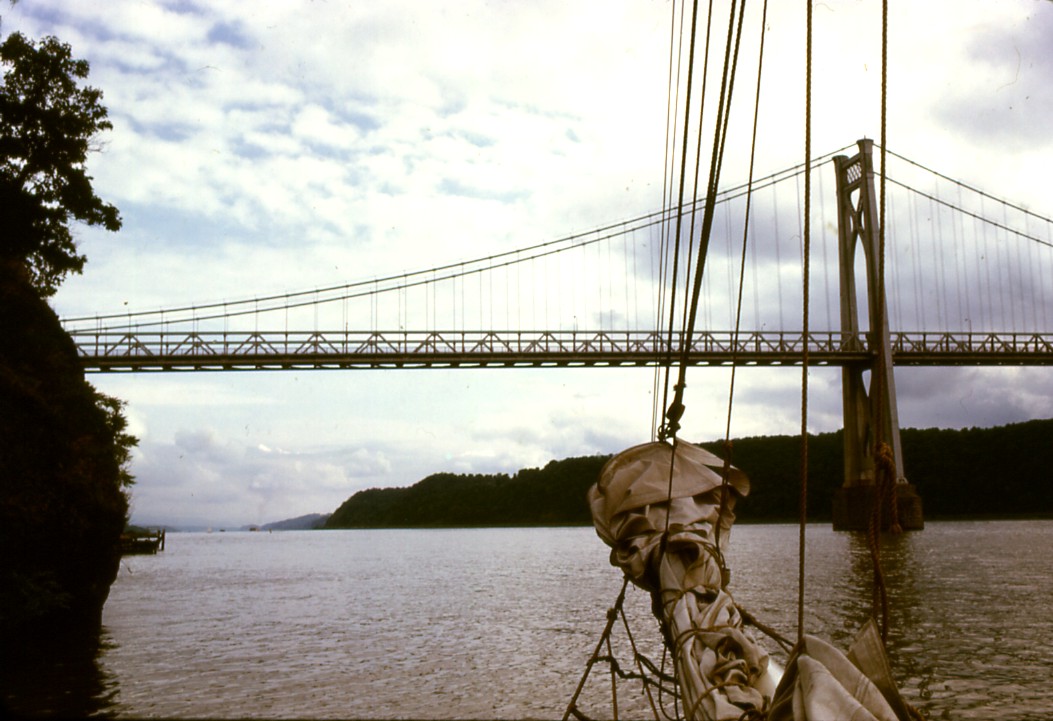
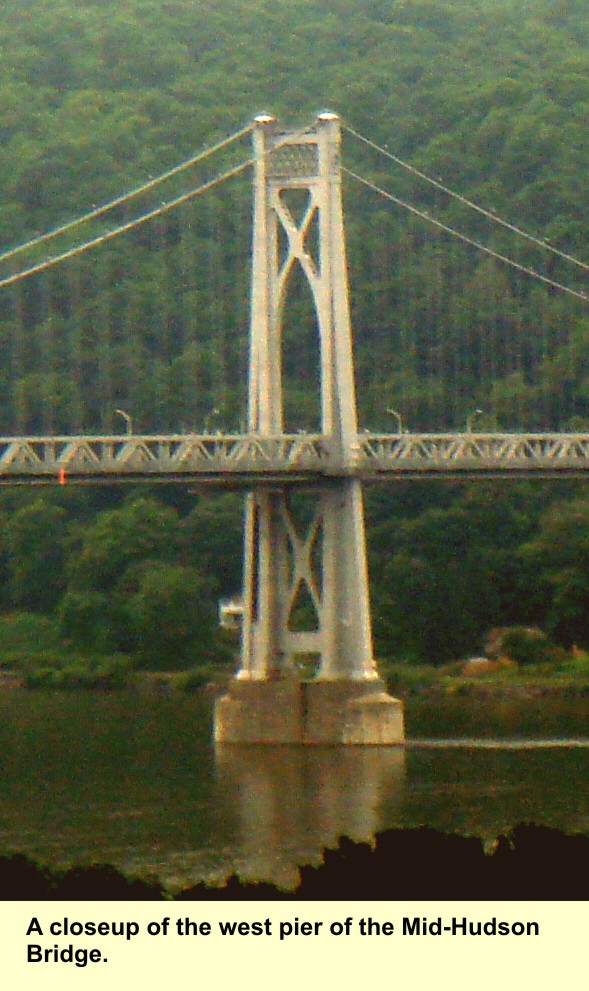
GO TO OTHER PAGES OF "ENGINEERS IN THE FAMILY"
To go to other pages of "Engineers in the Family," choose from the following:
- Engineers in the Family I: Walter Eugene Angier, civil engineer, father of Philip and grandfather of Dr. Cora Angier Sowa
- Engineers in the Family III: Alexander Lodyguine, Russian inventor and engineer, great-uncle by marriage of Dr. Cora Angier Sowa
All photos and other material on this site, unless otherwise identified, are copyrighted by Cora Angier Sowa.
 Send e-mail to Cora Angier Sowa.
Send e-mail to Cora Angier Sowa.
On this Web site, you are visitor number:
Last Modified: